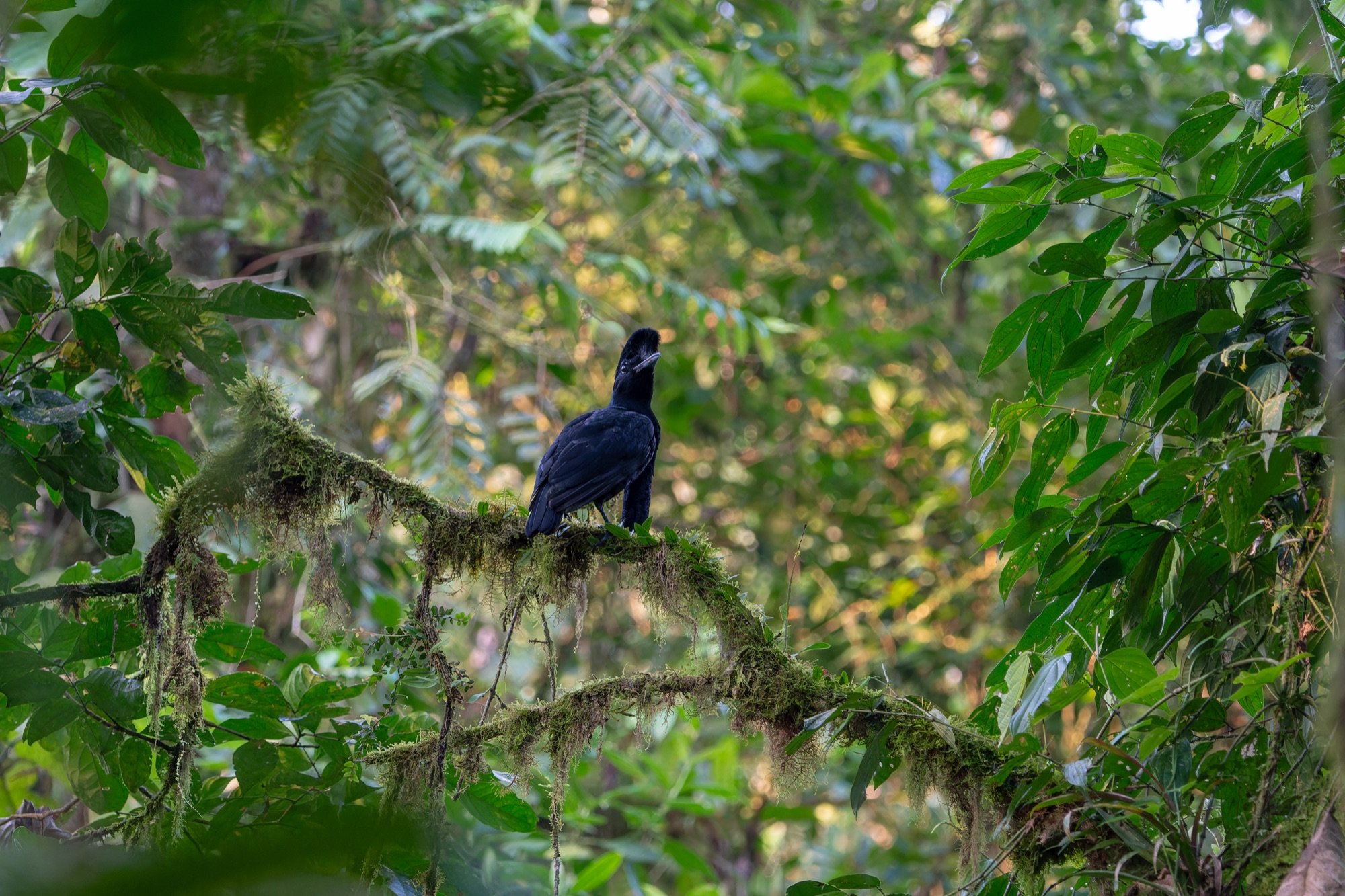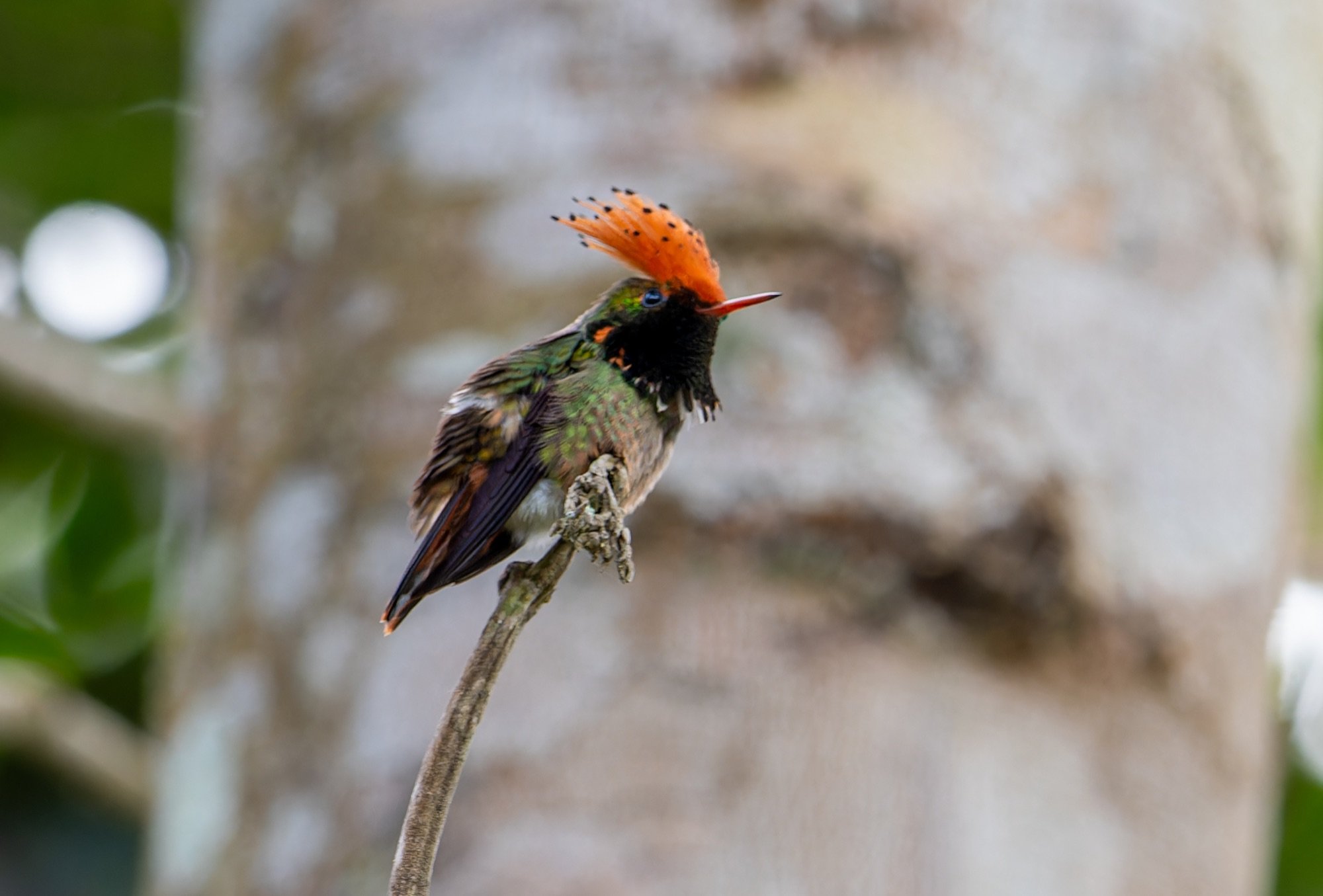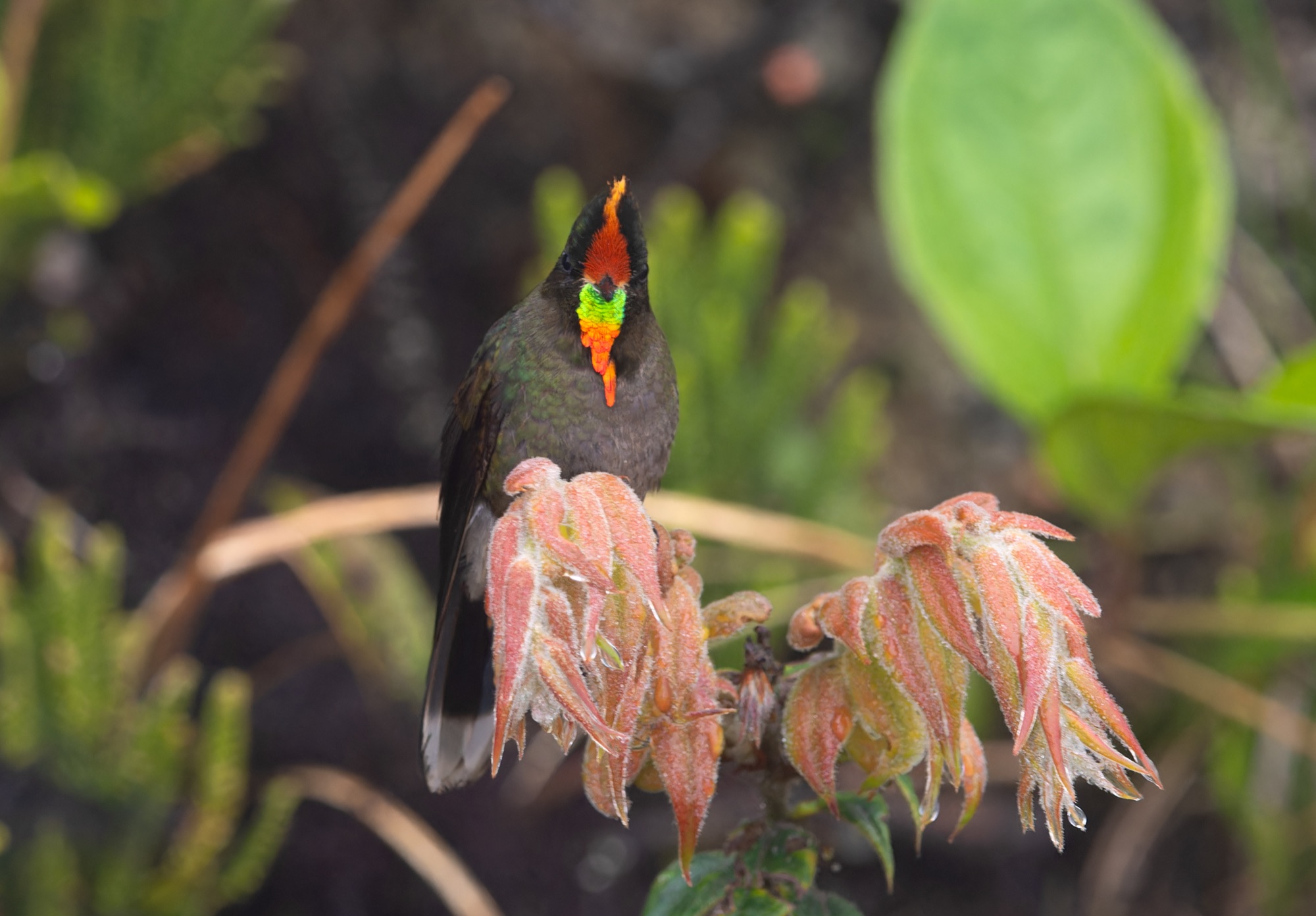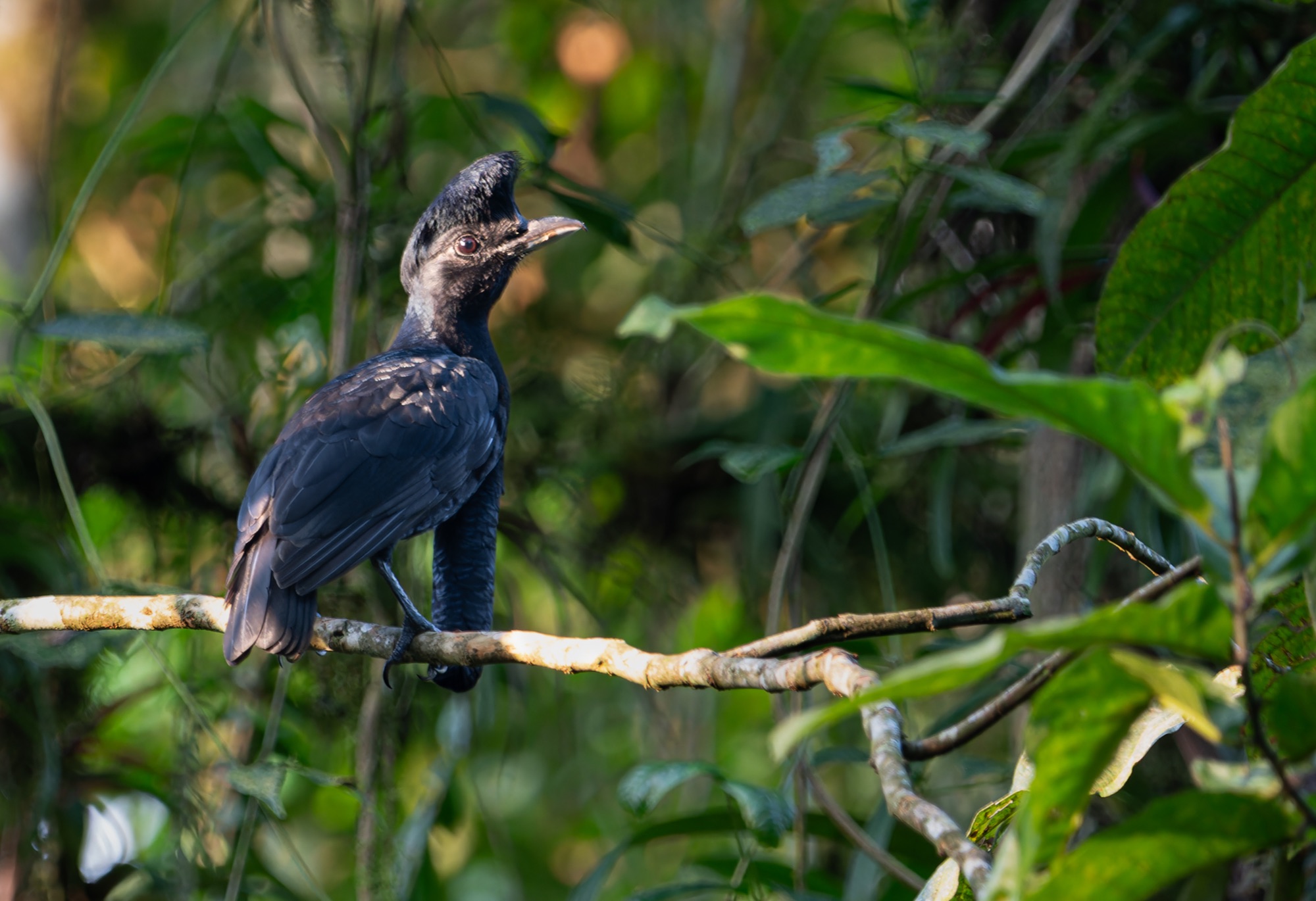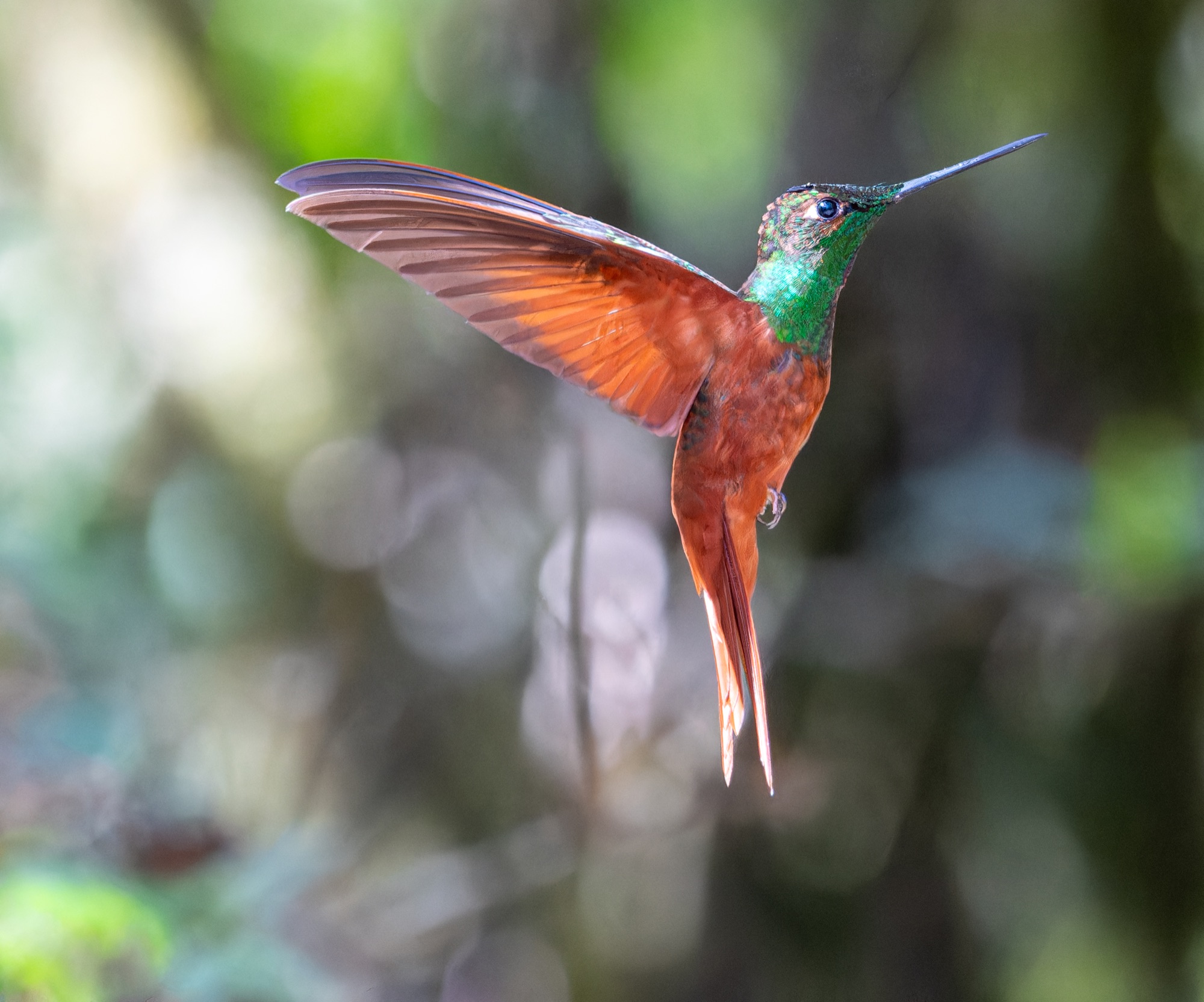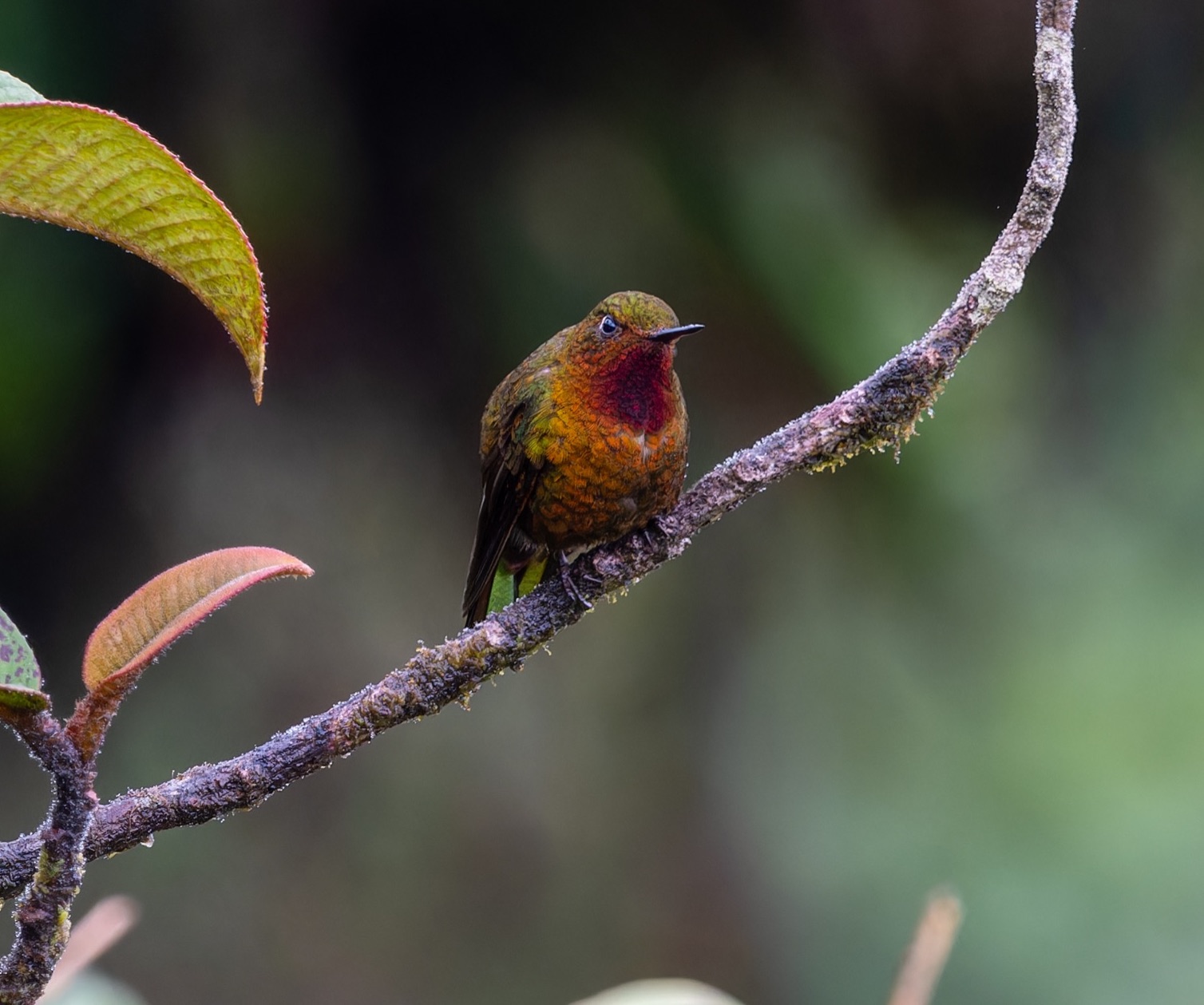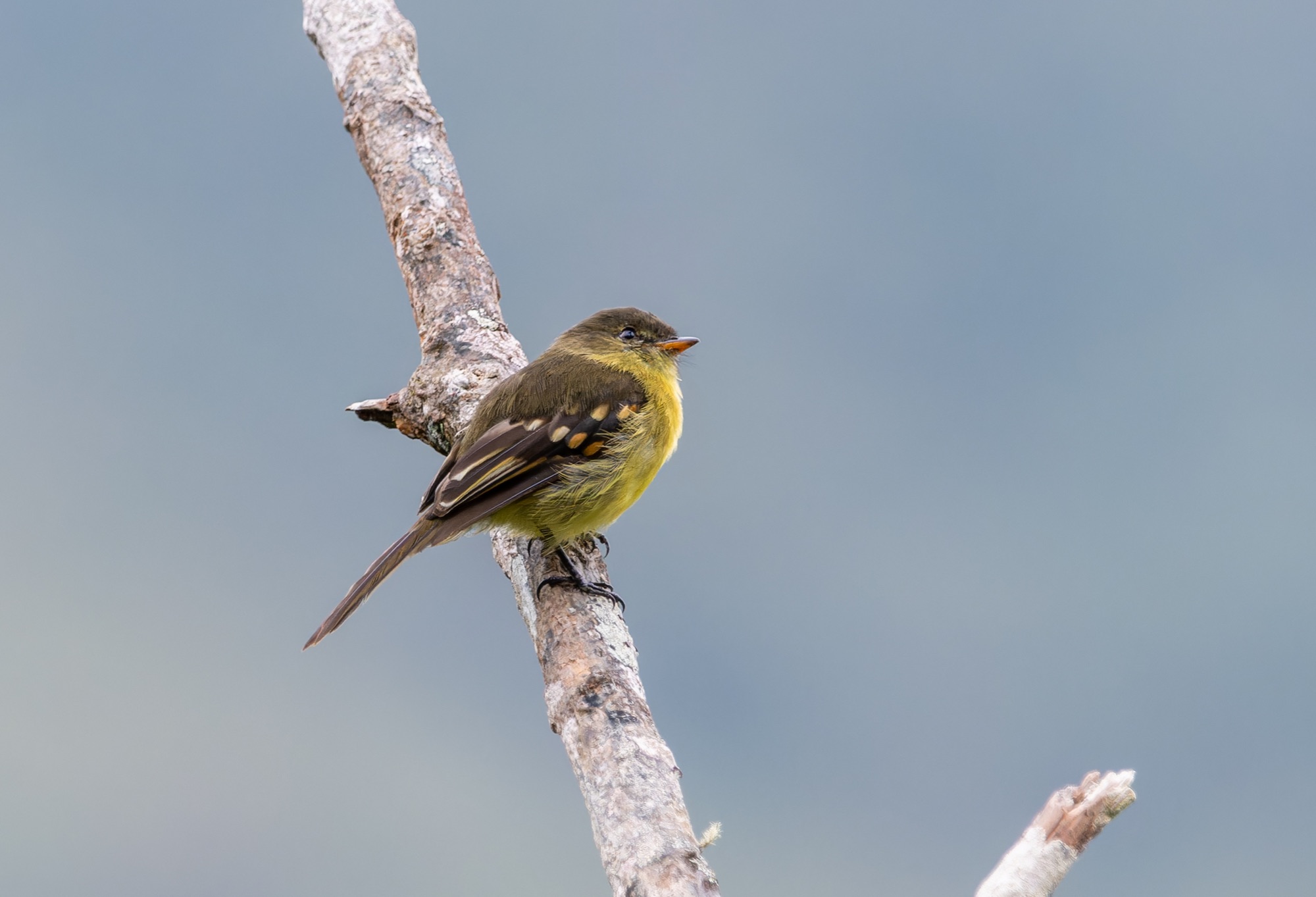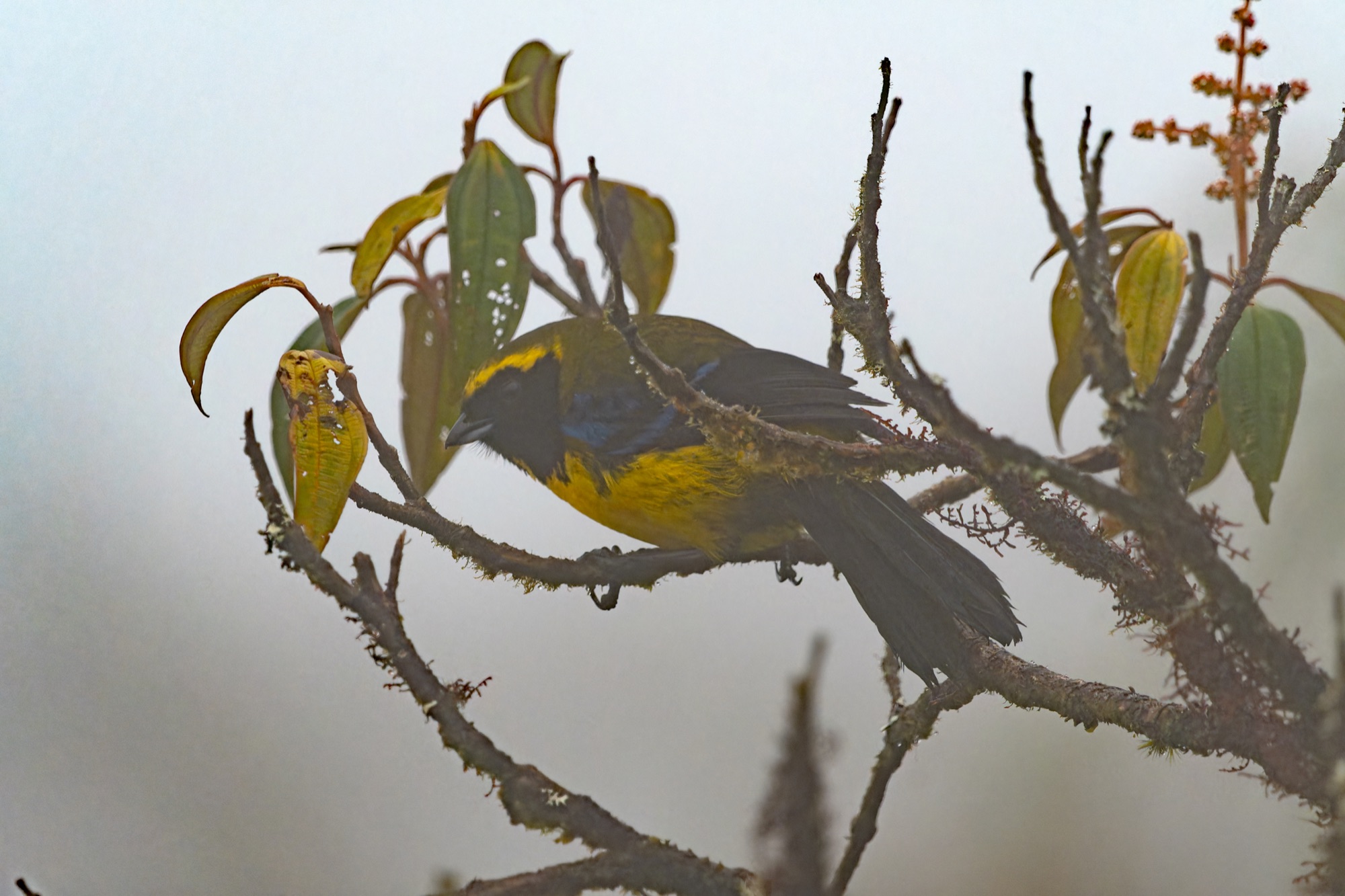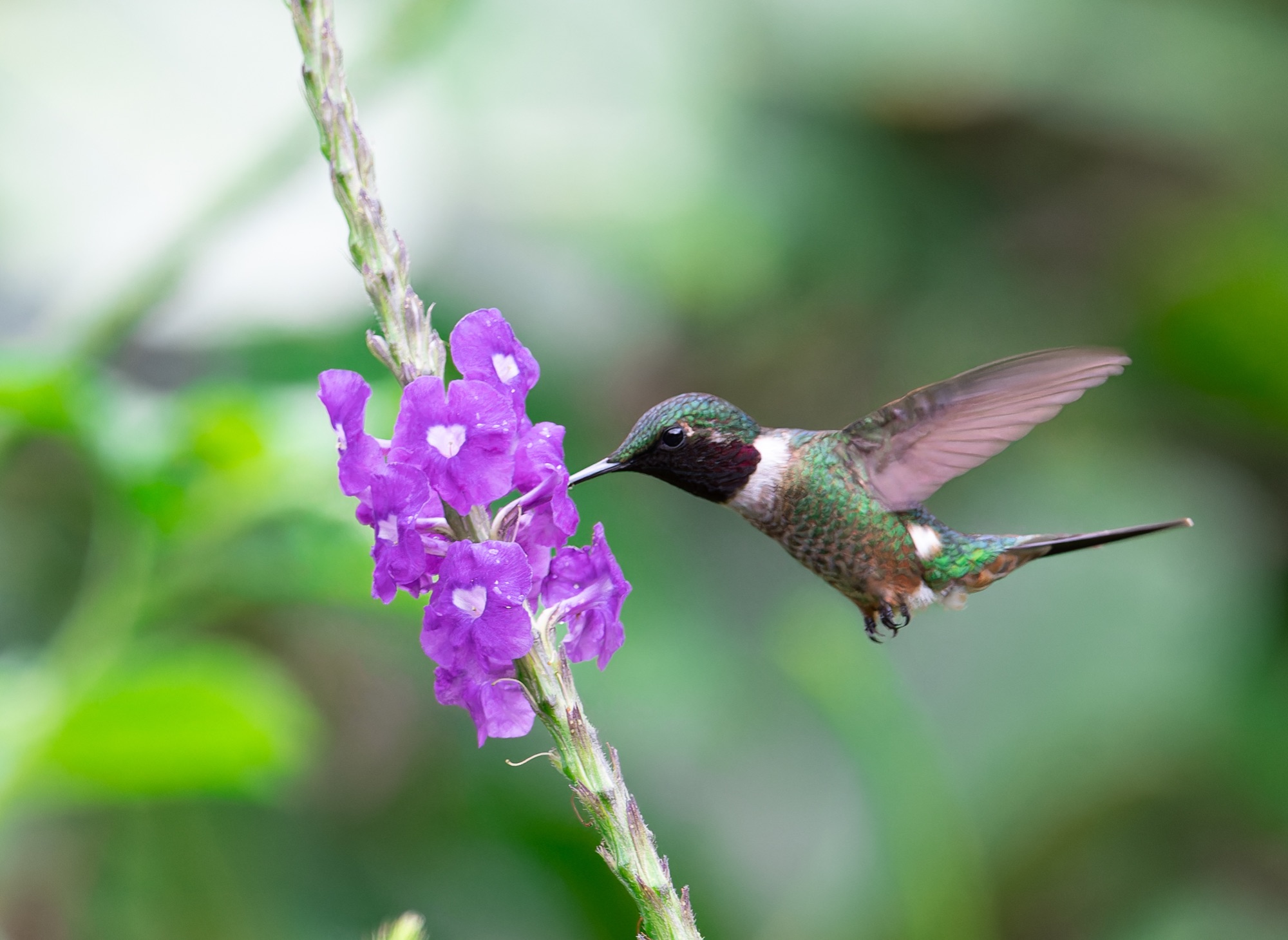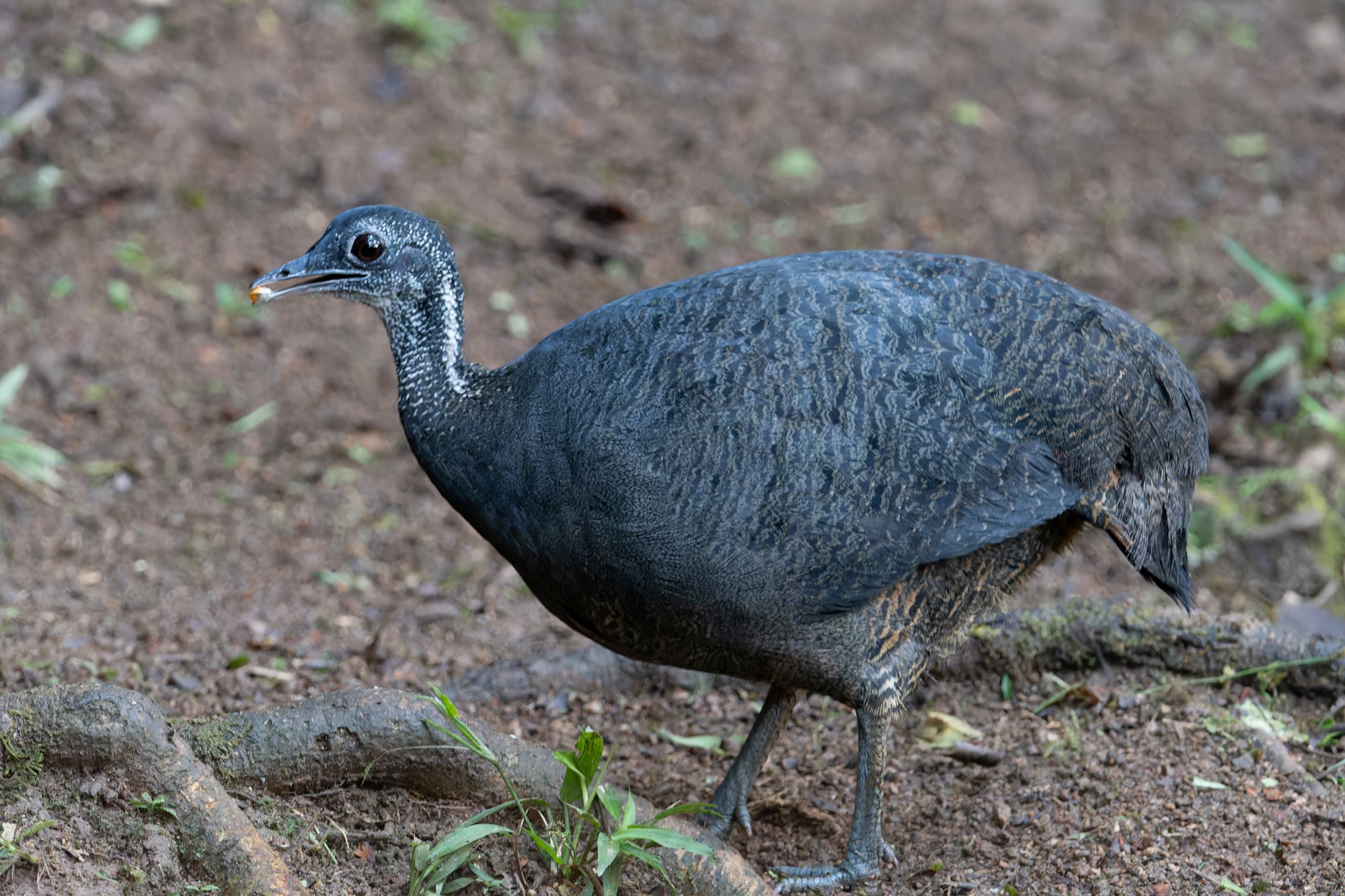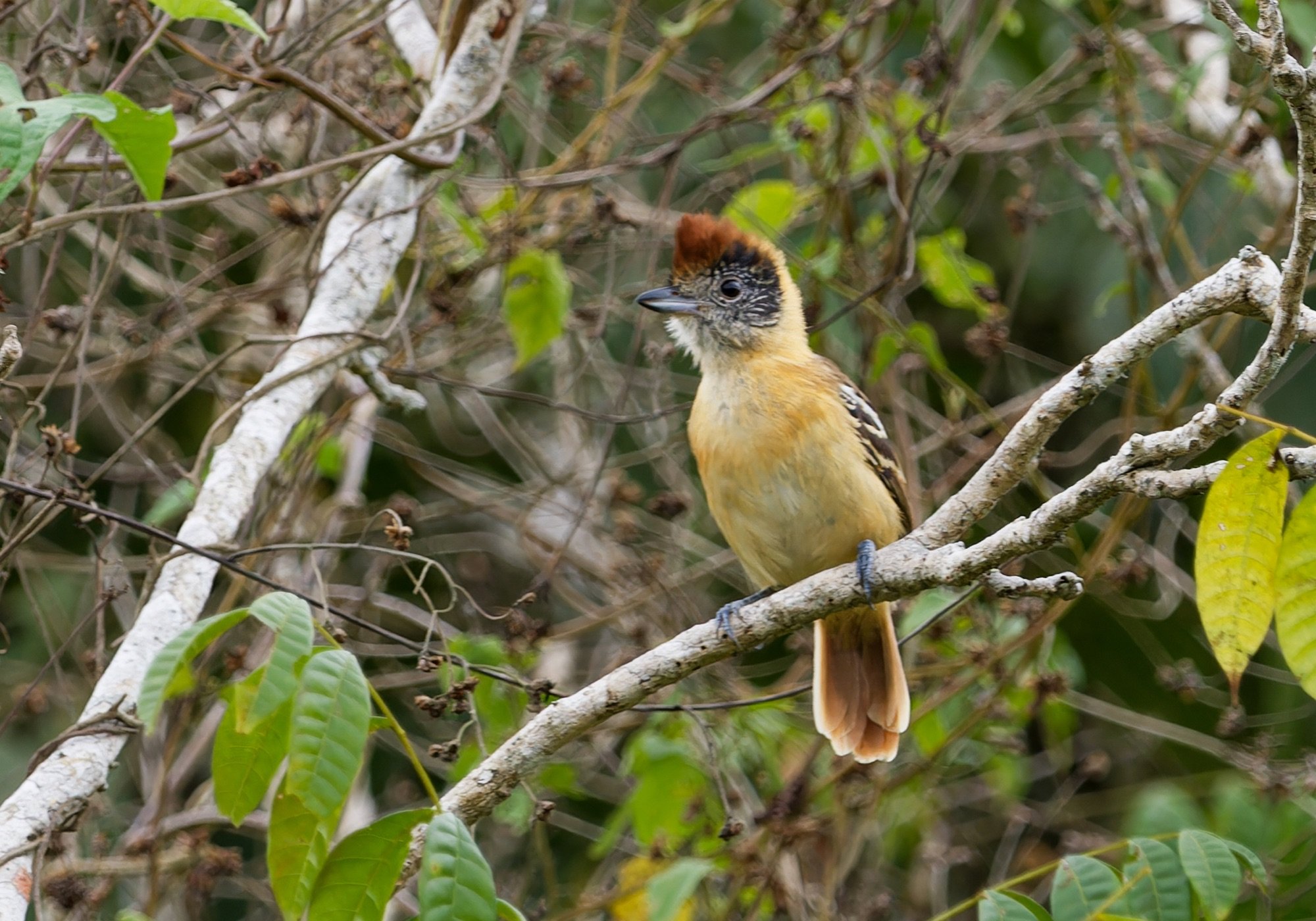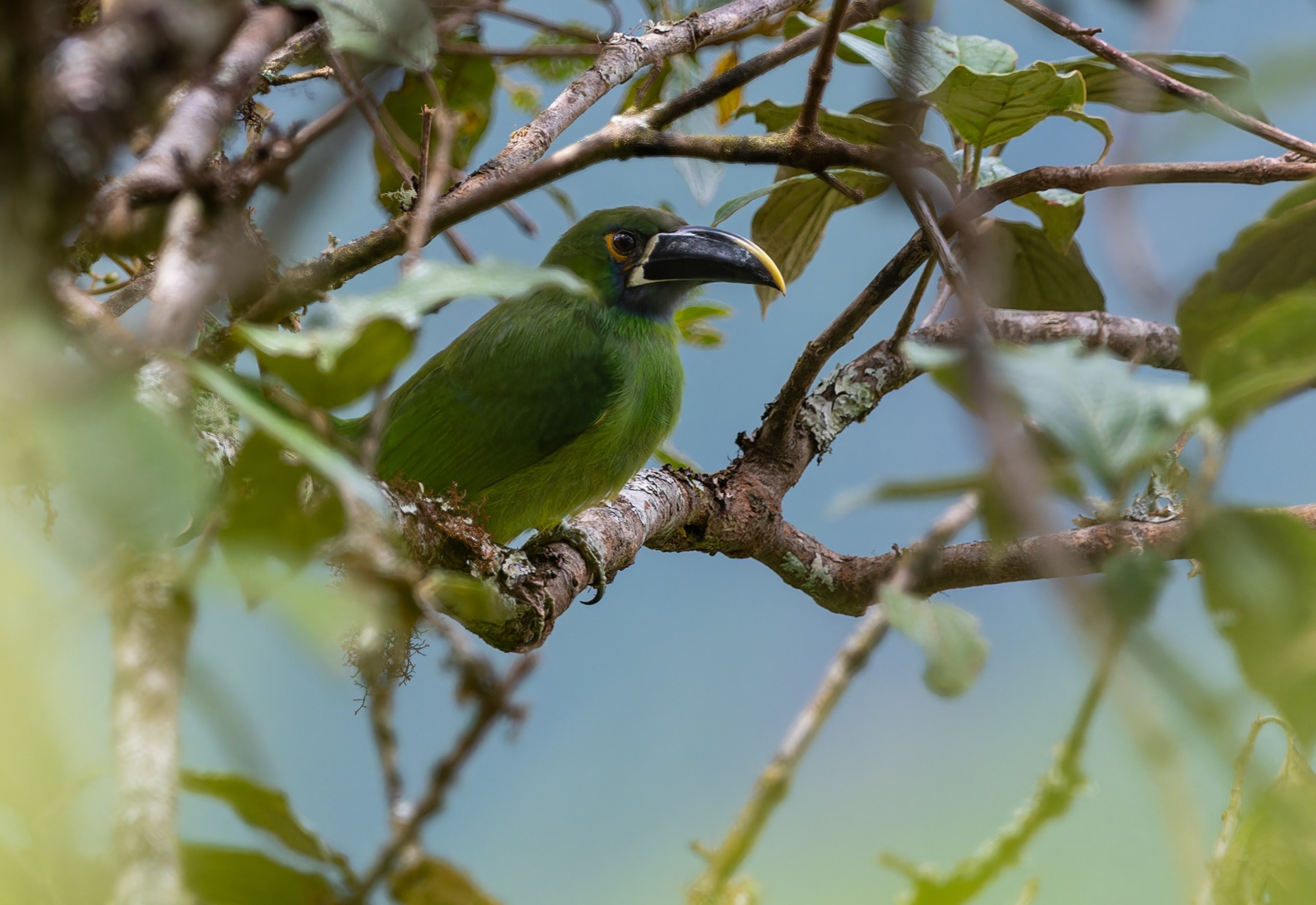SOUTHERN ECUADOR ITINERARY
Day 1 Arrival in Guayaquil, Ecuador - 5th December
This is purely an arrival day in Guayaquil where we will transfer to a nearby hotel and spend our first night in South America's most popular birding destination. Night in Guayaquil.
Day 2 Santa Elena Peninsula
Today we will visit various locations in and around the Santa Elena Peninsula, which is covered with semi-arid scrub, agricultural areas and small tracts of dry forest preserved in Cerro Blanco Protected Area. Some of the specialty birds found in this habitat are Pearl Kite, Short-tailed Woodstar, Necklaced Spinetail, Elegant Crescent-Chest, Short-tailed Field-Tyrant, White-tailed Jay, Collared Warbling-Finch, Parrot-billed Seedeater, Sulphur-throated Finch, Peruvian Meadowlark, and White-edged Oriole. At the end of the road are the Ecuasal Salt Ponds operated by the Salinas Salt Plant. The ponds are fenced off but a variety of birds can be observed around the ponds such as Peruvian Pelican, Chilean Flamingo, Gray Gull, Kelp Gull and Gray-headed Gull. Depending on time we can check out some other areas around Guayaquil for species such as Rufous-necked Woodrail, Rufous-headed Chachalaca, Pacific Pygmy Owl, Red-masked Parakeet, Grey-cheeked Parakeet, Whooping Motmot, Guayaquil Woodpecker, Ecuadorian and Gartered Trogons, Plain Antvireo, Collared Antshrike, Streak-headed Woodcreeper, Tropical Gnatcatcher, Yellow-olive Flatbill, Pacific Elaenia, Grey-and-gold Warbler and Streaked Saltator. Night in Guayaquil.
Day 3 Guayaquil - Buenaventura Reserve
Today we will drive south to the Jocotoco Foundations Buenaventura Reserve and the excellent Umbrellabird Lodge near Piñas, where we will stay for 2 nights. We will spend most of the day birding our way there as we travel across wetlands, coast, flooded fields and patched of forest. Potential species on this route include Horned Screamer, Muscovy Duck, Magnificent Frigatebird, various herons & egrets, White Ibis, Rufous-necked Woodrail, Savanna Hawk, Laughing Falcon, Wattled Jacana, various gulls & terns, Ecuadorian and Blue Ground-Doves, Pacific Pygmy-Owl, Ringed & Green Kingfishers, Red-rumped & Black-cheeked Woodpeckers, Peruvian Meadowlark, Jet Antbird, Masked Water-Tyrant, Black-tailed Flycatcher, Pacific Royal Flycatcher, Superciliated Wren, Lemon-rumped and White-shouldered Tanagers, Crimson-breasted Finch, Variable, Parrot-billed, Yellow-bellied and Chestnut-throated Seedeaters, and Thick-billed & Large-billed Seed Finches. By the time we arrive at Piñas there should be some time to check out the hummer feeders where we could see species such as Long-billed, White-whiskered and Baron's Hermits, Brown Violetear, Violet-bellied Hummingbird, Emerald-bellied Woodnymph, White-vented (Ecuadorian) Plumeleteer, Green Thorntail , Andean Emerald, Long-billed Starthroat, Purple-crowned Fairy, Green-crowned Brilliant, White-booted Racket-tail and Violet-tailed Sylph. Night at Umbrellabird Lodge.
Days 4 - 5 Buenaventura Reserve - Cerro de Arcos
The two main target species of this very impressive reserve are El Oro Parakeet and Long-wattled Umbrellabird. In fact it was here in 1980 that the endemic El Oro Parakeet was discovered and the reserve now protects the majority of its preferred remaining habitat. it's an incredibly small area to hold this species and it is one of the more elusive targets on this trip but we remain hopeful of catching a glimpse of this very rare psittacid. As for the umbrellabird, if we didn't visit its lek yesterday afternoon, we will definitely target this species today. To see this cotinga displaying is one of nature's true marvels and we have a very good chance of seeing it today. But there's so much to see here and it will be non-stop action all day as we bird from a road between 800m - 1200m in elevation. Just to give you a taster of what is possible here: Rufous-headed Chachalaca, Barred and Grey-backed Hawks, Bronze-winged Parrot, Red-masked Parakeet, Golden-headed Quetzal, Collared Trogon, Crimson-rumped Toucanet, Pale-billed Aracari, Choco Toucan, White-tipped Sicklebill, Emerald-bellied Woodnymph, Wedge-billed Hummingbird, Guayaquil & Golden-olive Woodpeckers, Scaled Fruiteater, Barred Puffbird, Grey-rumped Swift, Club-winged & Golden-winged Manakins, Plain-backed & Ochre-breasted Antpittas, Esmereldas & Zeledon's Antbirds, Russet & Uniform Antshrikes, Checker-throated & Slaty Antwrens, Ochraceous Attila, Andean Solitaire, Uniform Treehunter, Brown-billed Scythebill, Pacific Tuftedcheek, Spotted Woodcreeper, Brownish Twistwing, Yellow & Rufous-winged Tyrannulets, Olive-striped Flycatcher, Bronze-olive Pygmy-Tyrant, Song & Whiskered Wrens, Slaty Becard, White-throated Spadebill, El Oro Tapaculo, Golden, Flame-faced, Ochre-breasted, Rufous-throated, Golden-naped, Silver-throated & Bay-headed Tanagers, Black-and-white Seedeater, Black-winged Saltator and Dusky Brush-Finch. We will probably spend lunchtimes watching the feeders back at the lodge where hundreds of hummers are often in attendance, along with an amaing variety of other species and it will be hard to drag ourselves away to continue birding along the road.
The next morning we will leave early and head up into the highlands to Cerro de Arcos where we will look for the recently discovered Blue-throated Hillstar. We will drive part of the way there in our minibus before transferring into a 4x4 vehicle and head up the mountain along a rather uneven track, but the effort will definitely be worth it to see this incredibly rare and localised hummer! We could also see Viridian Metaltail and White-vented Plumeleteer on this journey as well. This is surely going to be one of those places we will never forget! Night at Umbrellabird Lodge.
Day 6 Drive to Jorupe Reserve
Today we will drive to Jorupe, located not too far from the Peruvian border and our base for the next 2 nights at The Jocotoco Foundations Urraca Lodge. We will pass through patches of dry woodland where species such as Tumbes Hummingbird, Tumbes Sparrow and White-headed Brushfinch can be seen. If time permits and we arrive early enough then an initial exploration into the Tumbesian forest can be made or we can watch the feeders for Amazilia Hummingbird, but we will almost certainly want to do a spot of owling tonight as Buff-fronted Owl & West Peruvian Screech-Owl have both been recorded here in the past,. However, Spectacled Owl is far more likely! Fingers crossed! Night at Urraca Lodge.
Day 7 Jorupe Reserve
We have a full day to explore the various trails in the reserve that protect a large area of Tumbes semi-decidiuous forest where we can search of some mouth-watering species that include Pale-browed Tinamou, Grey-backed Hawk, Ochre-bellied Dove, Pacific Pygmy Owl, Whooping Motmot, Ecuadorian Piculet, Scarlet-backed Woodpecker, Pacific Parrotlet, Ecuadorian Trogon, Watkin’s Antpitta, Blackish-headed Spinetail, Henna-hooded Foliage-Gleaner, Red-billed Scythebill, Collared Antshrike, Tumbes Pewee, Grey-breasted Flycatcher, Pacific Elaenia, Tawny-crowned Pygmy-Tyrant, Short-tailed Swift, One-coloured Becard, Long-tailed Mockingbird, Speckle-breasted Wren, Black-capped Sparrow, Elegant Crescentchest and Black-capped Sparrow,
Watching feeders full of activity will be something of a theme on this tour and here possibilities include Ecuadorian & Plumbeous-backed Thrushes, White-edged & Yellow-tailed Orioles and White-tailed Jay amongst others
If we get the chance to bird higher up, then a whole new range of species await such as Scaled Antpitta, Grey-headed Antbird, Chapman’s Antshrike, Tumbesian Tyrannulet, Rufous-crowned Tody-Tyrant, Rufous-necked Foliage-Gleaner, Black-cowled Saltator, Blackish Tapaculo, Piura Hemispingus, Bay-crowned Brush-Finch, Jelski’s Chat-Tyrant, Black-crested Tit-Tyrant and Rufous-chested Tanager to name just a few. Yet more feeders could provide us with Rainbow Starfrontlet and Purple-throated Sunangel amongst others. Night at Urraca lodge.
Day 8 Drive to Utuana Reserve - Taipichalaca Reserve
We plan to leave early this morning and drive to Utuana Reserve for species such as Rainbow Starfrontlet, Purple-throated Sunangel, Chestnut-collared Swallow, Line-cheeked Spinetail, Loja Tyrannulet, Chapman’s Antshrike, Grey-headed Antbird, Jelski’s Chat-Tyrant, Piura Hemispingus and Black-cowled Saltator. After lunch we will drive and bird the road to Tapichalaca Reserve. Overnight at the Jocotoco Foundation's Casa Simpsom.
Day 9 Tapichalaca Reserve
As recent as 1997 a new species of antpitta was discovered here and this discovery of Jocotoco Antpitta spawned a whole new series of reserves and accommodations by the Jocotoco Foundation. This is the foundation's premier reserve, covering an altitude of 1,500m to 2,900m and is home to over 400 species of bird. Today will be a day to remember as we make the pilgrimage to seek this most enigmtic of birds. Hopefully the bird will play ball at its chosen stakeout, which is currently an 'earthworm garden' that also has proven a good spot to see Chestnut-naped Antpitta as well, plus there's a slim chance of Undulated Antpitta too. Amidst this stunning epiphyte-laden forest there are plenty more birds to look for such as White-throated Quail-Dove, Bearded Guan, White-capped Parrot, White-breasted and Golden-plumed Parakeets, Andean Potoo, Grey-breasted Mountain-Toucan, Bar-bellied and Powerful Woodpeckers, Andean Pygmy-Owl, Barred Fruiteater, Barred Antthrush, Slate-crowned and Rufous Antpittas, Black-capped Tyrannulet, Orange-banded Flycatcher, Rufous-headed Pygmy-Tyrant, Russet-crowned Warbler, Chusquea Tapaculo, Turquoise Jay, Maranon Thrush, Grey-hooded Bush-Tanager, Red-hooded, White-capped & Grass-green Tanagers..
Continuing the feeder theme throughout this tour, there are more hummer feeders here hosting Fawn-breasted Brilliant, Collared Inca, Chestnut-breasted Coronet, Amethyst-throated and Flame-throated Sunangels, Long-tailed Sylph and White-bellied Woodstar. And there's a compost heap attracting a crazy variety of species including Black-throated Tody-Tyrant. At dusk we will try for Swallow-tailed Nightjar and White-throated Screech-Owl near the lodge. Night at Casa Simpsom.
Day 10 Taipichalaca Reserve - Loja
We can spend the morning chasing new species for our list here before having lunch and then driving to Loja for an overnight stay.
Days 11 - 12 Loja - Yankuam Lodge
Today we will drive and bird the road towards Yankuam lodge, where we will stay for 2 nights. Along the way we could see Blackish Rail, Black-throated Hermit, Blue-crowned Trogon, Lined Antshrike, Olive-chested Flycatcher, Rusty-fronted Tody-Flycatcher, Black-and-white Tody-Flycatcher, Striped Manakin andboth Chestnut-bellied & Black-billed Seed-Finches amongst others.
We will then have a full day to thoroughly explore this superb area where one of the star birds is Orange-throated Tanager, which moves around in family groups. These east slope foothills are very species-rich and there are numerous possibilities here such as Black-and-white Hawk-Eagle, Military Macaw, Lettered Aracari, Great & Purplish Jacamars, Striolated Puffbird, Fiery-throated Fruiteater, White-throated Woodpecker, Lemon-throated Barbet, Zimmer’s Antbird, White-plumed Antbird, White-browed Antbird, Hairy-crested Antbird, Peruvian Warbling Antbird, Rufous-winged, Ornate and Foothill Antwrens, White-bellied Pygmy-Tyrant, Bamboo Foliage-Gleaner, Dusky Spinetail, Blackish Pewee, Grey-tailed Piha, Foothill Schiffornis, Black-and-white & Golden-winged Tody-Flycatchers, Red-billed Tyrannulet, Olive-chested Flycatcher, White-eyed Tody-Tyrant, Yellow-cheeked Becard, Wing-banded Wren, Southern Nightingale-Wren, Opal-rumped, Turquoise, Yellow-backed, Yellow-bellied & Masked Tanagers, and Yellow-shouldered Grosbeak amongst many other target species we hope to see today.
We will also try to spend some time birding the garden of the lodge as their flowers often attract Glittering-throated Emerald and sometimes Amethyst Woodstar, whilst Uniform and Chestnut-headed Crakes call from the undergrowth and at dusk Band-bellied Owl sometimes puts in an appearance. Night at Yankuam lodge.
Days 13 - 14 Yankuam - Bombuscaro/ Copalinga Lodge.
We will start early today in search of Chestnut-bellied Cotinga and Crescent-faced Antpitta, as well as seeking any other target species still needed at Yankuam. Once finished here we will set out on the drive to the excellent Copalinga Lodge near the Bombuscara entrance to Podocarpus National Park. Along the way we might bird along the old Loja-Zamora Road looking for flocks and anything is possible: Fasciated Tiger-Heron, Torrent Duck, Coppery-chested Jacamar, Black-billed Treehunter, White-capped Dipper, Ecuadorian Tyrannulet, Grey-mantled Wren, Western Striped Manakin, Ashy-throated Bush-Tanager, Chestnut-vented Conebill, Subtropical Cacique and so much more!
We plan to arrive at Copalinga Lodge in time to check out yet more hummer feeders for Wire-crested Thorntail, Violet-headed Hummingbird, Violet-fronted Brilliant, Green Hermit and sometimes Spangled Coquette & Little Woodstar are in attendance. Fruit-feeders can at times be busy with Speckled Chachalaca, Black-billed Thrush, Russet-backed Oropendola, Orange-billed Sparrow, and a nice selection of tanagers. There has also been a Grey Tinamou at the feeders here and at dusk we shall try for Blackish Nightjar.
We will then have a full day at the Bombuscaro sector of the splendid Podocarpus National Park. Here an excellent trail takes us through pristine, upper-tropical forest where we can look for a superb selection of foothill and even some Amazonian specialities.. The wide trails are excellent for species such as Band-bellied Owl, Chestnut-tipped Toucanet, White-breasted Parakeet, Coppery-chested Jacamar, Andean Motmot, Andean Cock-of-the-Rock, Amazonian Umbrellabird, Black-streaked Puffbird, Lanceolated Monklet, Red-headed Barbet, Foothill Antwren, Ash-browed Spinetail, Foothill Elaenia, Equatorial Graytail, Grey-mantled Wren, Blue-rumped Manakin, and both Orange-eared and Golden-eared Tanagers. Hummer feeders at the lodge attract the rare Black-throated Brilliant and Wire-crested Thorntail as well, to add to our impressive list so far. Night at Copalinga lodge.
Day 15 Copalina Lodge - Loja
We can have a full morning to catch up with any species still needed for our lists and after lunch we will drive back towards Loja for an overnight stay.
Day 16 Yunguilla Valley - Cuenca
We will pay a visit to the Yunguilla Reserve this morning for the endemic and exceedingly localised Pale-headed Brush-Finch. Other species present include Black-chested Buzzard-Eagle, Striped Cuckoo, Green Violetear, Purple-collared Woodstar, Chestnut-crowned Antpitta, Line-cheeked Spinetail, Great Thrush, Slaty-backed Nightingale-Thrush, Black-lored Yellowthroat, Black-crested Warbler, Southern Yellow Grosbeak, Dull-colored Grassquit and Grey-browed Brushfinch amongst others. Night at Las 2 Chorreras Lodge.
Day 17 El Cajas National Park - Guayaquil - End of Tour - 21st December
This morning we will visit the paramo and polylepis forest of El Cajas National Park, searching for the endemic and often tricky Violet-throated Metaltail. Flowering shrubs near the pass are home to Ecuadorian Hillstar, and other species at this high altitude include Ecuadorian Rail, Carunculated Caracara, Andean Pygmy Owl, Blue-mantled Thornbill, Tawny Antpitta, Tit-like Dacnis, Giant Conebill, Andean Tit-Spinetail, Many-striped Canastero, Chestnut-winged & Stout-billed Cinclodes, Brown-bellied Swallow, Paramo Ground-Tyrant, Red-rumped Bush-Tyrant, Brown-backed Chat-Tyrant, Superciliaried Hemispingus, Plain-coloured Seedeater and Plumbeous Sierra-Finch amongst others. After lunch we will drive to Guayaquil in time for our international flights and the end of a superb tour.
